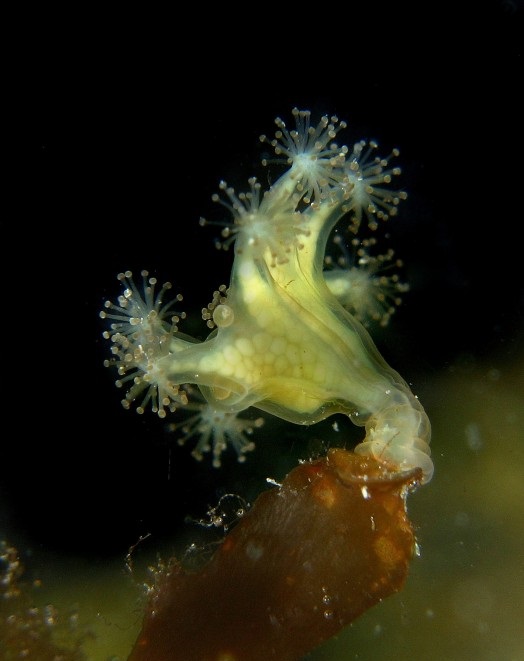Page path:
- Home
- Discover
- Media Releases
- Media Releases 2012
- 16-01-2012 From Genes to EcosystemEuroMarine Ge...
From Genes to EcosystemEuroMarine General Assembly in Bremen
Dr Stephane Pesant from the MARUM in Bremen says: " The EuroMarine network will establish common services and tools to train and support a new generation of scientists that can specialize in one field and still be literate-in and connected-to the fields of genomics, biodiversity and ecosystem research."
This two year EuroMarine project is supported in the Bremen State by the Centre for Marine Environmental Sciences (MARUM), the Max Planck Institute for Marine Microbiology and the Alfred Wegener Institute for polar and marine science, together with many universities and research institutions from Sweden, Portugal, France, Denmark, the Netherlands, United Kingdom, Italy, Germany and Belgium, and is coordinated by the University of Gothenburg.
For interviews please contact Manfred Schloesser. On Wednesday, 18 January 2012, after the opening ceremony starting at 14:00 we are pleased to welcome journalists at the Atlantic Hotel Universum (www.atlantic-hotels.de/universum)
Manfred Schlösser
Contact:
This two year EuroMarine project is supported in the Bremen State by the Centre for Marine Environmental Sciences (MARUM), the Max Planck Institute for Marine Microbiology and the Alfred Wegener Institute for polar and marine science, together with many universities and research institutions from Sweden, Portugal, France, Denmark, the Netherlands, United Kingdom, Italy, Germany and Belgium, and is coordinated by the University of Gothenburg.
For interviews please contact Manfred Schloesser. On Wednesday, 18 January 2012, after the opening ceremony starting at 14:00 we are pleased to welcome journalists at the Atlantic Hotel Universum (www.atlantic-hotels.de/universum)
Manfred Schlösser
Contact:
Dr. Manfred Schloesser,
Press officer at the Max Planck Institute for Marine Microbiology, Celsiusstrasse 1, D-28359 Bremen, Germany
+49 421 2028704
[Bitte aktivieren Sie Javascript]
www.mpi-bremen.de
For further information and images:
www.euromarineconsortium.eu
www.mpi-bremen.de/en/EuroMarine.html
The program of the general assembly:
http://www.euromarineconsortium.eu/news?start=65
EuroMarine project partners:
Sweden: Faculty of Sciences, University of Gothenburg
Denmark: Technical University of Denmark (DTU), National Institute of Aquatic Resources (DTU-Aqua).
United Kingdom: The Marine Biological Association (MBA), Plymouth Marine Sciences Partnership (PMSP);
Germany: Max-Planck-Gesellschaft (MPG), Max Planck Institute for Marine Microbiology, Microbial Genomics/Bioinformatics Group (MPIMM); University of Bremen (UniHB), the Centre for Marine Environmental Sciences ( MARUM); Environmental & Marine Project Management Agency ( EMPA);
The Netherlands: Royal Netherlands Institute for Sea Research (NIOZ); University of Groningen (RUG), Marine Benthic Ecology & Evolution (MarBEE); Royal Netherlands Academy of Arts and Sciences (KNAW), the centre for Estuarine and Marine Ecology (CEME) of the Netherlands Institute of Ecology (NIOO).
Belgium: University of Gent (UGENT), Department of Marine Biology; Flanders Marine Institute (VLIZ);
France: Centre National de la Recherche Scientifique (CNRS), Station Biologique de Roscoff (SBR); French Research Institute for Exploitation of the Sea (Ifremer); Institut de Recherche pour le Développement (IRD), Centre de recherche halieutique, Sète.
Italien: Ministero dell’Università e della Ricerca (MIUR), Stazione Zoologica Anton Dohrn (SZN);
Portugal: Centre of Marine and Environmental Research (CIMAR), Centro de Ciencias do Mar do Algarve (CCMAR); Centre of Marine and Environmental Research (CIMAR), Centro Interdisciplinar de Investigaçao Marinha e Ambiental (CIIMAR).
Press officer at the Max Planck Institute for Marine Microbiology, Celsiusstrasse 1, D-28359 Bremen, Germany
+49 421 2028704
[Bitte aktivieren Sie Javascript]
www.mpi-bremen.de
For further information and images:
www.euromarineconsortium.eu
www.mpi-bremen.de/en/EuroMarine.html
The program of the general assembly:
http://www.euromarineconsortium.eu/news?start=65
EuroMarine project partners:
Sweden: Faculty of Sciences, University of Gothenburg
Denmark: Technical University of Denmark (DTU), National Institute of Aquatic Resources (DTU-Aqua).
United Kingdom: The Marine Biological Association (MBA), Plymouth Marine Sciences Partnership (PMSP);
Germany: Max-Planck-Gesellschaft (MPG), Max Planck Institute for Marine Microbiology, Microbial Genomics/Bioinformatics Group (MPIMM); University of Bremen (UniHB), the Centre for Marine Environmental Sciences ( MARUM); Environmental & Marine Project Management Agency ( EMPA);
The Netherlands: Royal Netherlands Institute for Sea Research (NIOZ); University of Groningen (RUG), Marine Benthic Ecology & Evolution (MarBEE); Royal Netherlands Academy of Arts and Sciences (KNAW), the centre for Estuarine and Marine Ecology (CEME) of the Netherlands Institute of Ecology (NIOO).
Belgium: University of Gent (UGENT), Department of Marine Biology; Flanders Marine Institute (VLIZ);
France: Centre National de la Recherche Scientifique (CNRS), Station Biologique de Roscoff (SBR); French Research Institute for Exploitation of the Sea (Ifremer); Institut de Recherche pour le Développement (IRD), Centre de recherche halieutique, Sète.
Italien: Ministero dell’Università e della Ricerca (MIUR), Stazione Zoologica Anton Dohrn (SZN);
Portugal: Centre of Marine and Environmental Research (CIMAR), Centro de Ciencias do Mar do Algarve (CCMAR); Centre of Marine and Environmental Research (CIMAR), Centro Interdisciplinar de Investigaçao Marinha e Ambiental (CIIMAR).




